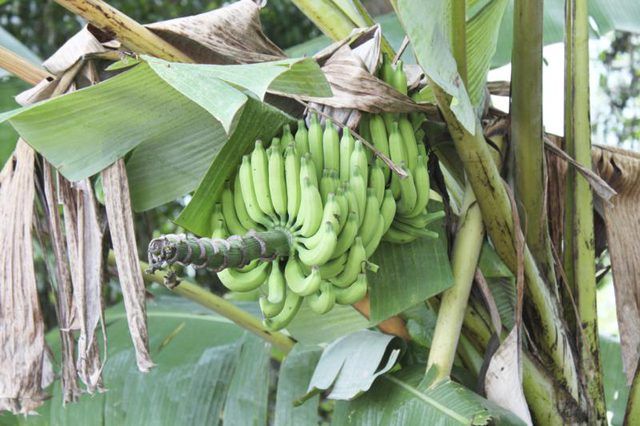Bulbs
Flower Basics
Flower Beds & Specialty Gardens
Flower Garden
Garden Furniture
Garden Gnomes
Garden Seeds
Garden Sheds
Garden Statues
Garden Tools & Supplies
Gardening Basics
Green & Organic
Groundcovers & Vines
Growing Annuals
Growing Basil
Growing Beans
Growing Berries
Growing Blueberries
Growing Cactus
Growing Corn
Growing Cotton
Growing Edibles
Growing Flowers
Growing Garlic
Growing Grapes
Growing Grass
Growing Herbs
Growing Jasmine
Growing Mint
Growing Mushrooms
Orchids
Growing Peanuts
Growing Perennials
Growing Plants
Growing Rosemary
Growing Roses
Growing Strawberries
Growing Sunflowers
Growing Thyme
Growing Tomatoes
Growing Tulips
Growing Vegetables
Herb Basics
Herb Garden
Indoor Growing
Landscaping Basics
Landscaping Patios
Landscaping Plants
Landscaping Shrubs
Landscaping Trees
Landscaping Walks & Pathways
Lawn Basics
Lawn Maintenance
Lawn Mowers
Lawn Ornaments
Lawn Planting
Lawn Tools
Outdoor Growing
Overall Landscape Planning
Pests, Weeds & Problems
Plant Basics
Rock Garden
Rose Garden
Shrubs
Soil
Specialty Gardens
Trees
Vegetable Garden
Yard Maintenance
How to Care for Banana Trees to Get Bananas
How to Care for Banana Trees to Get Bananas. If you already have a banana plant (Musa acuminata or Musa balbisiana) growing in your yard, but have yet to see it produce any fruit, shore up some patience. Tropical plants that grow in U.S. Department of Agriculture plant hardiness zones 8 through 11, bananas typically produce their flowers about 10...

If you already have a banana plant (Musa acuminata or Musa balbisiana) growing in your yard, but have yet to see it produce any fruit, shore up some patience. Tropical plants that grow in U.S. Department of Agriculture plant hardiness zones 8 through 11, bananas typically produce their flowers about 10 to 15 months after first emerging from the ground -- though it can take longer if you don't properly care for the plants. The first three to four months of the plant's life will determine how much it produces, notes University of Florida's IFAS Extension. To give it the right care, pay special attention to fertilizer and water, as well as the growth habits of your banana tree.
Fertilizer Needs
Bananas grow well in a fertile soil that is moist but not waterlogged. The plants also prefer full sun with some protection from the wind. University of Florida IFAS Extension recommends fertilizing each young plant with 1/2 pound of 6-2-12 fertilizer every 60 days. When the flowers and the purple-colored bracts emerge, increase this in 1/2-pound increments until you're giving the plants 5 pounds of fertilizer throughout the flowering cycle.
Adequate Water
Unless you give them just the right amount of water, banana plants won't thrive. Bananas don't fare well in soggy soil, and tend to fruit slowly if they're not getting enough water. To strike a balance, provide about 1 to 1 1/2 inches of water each week. To check that the soil drains adequately, dig a post hole 2 feet deep in the area where your bananas are planted. Fill the hole with water and check how much had drained away after two hours. If the water is not gone, consider installing a drainage system, such as an underground pipe with holes, to carry away excess moisture.
Pruning for Good Growth
If you have a banana plant, you'll likely end up with more than just one. Bananas send out underground rhizomes that force new shoots up, creating the potential for having a full banana grove within a few years. Because all of those plants are connected, cutting some back will allow one to focus on flowering. Ideally, you'll have three plants growing in one area at a time, removing all others. Leave one alone and allow it to flower. Cut another one back to one-half of the largest one's size, and cut the third down short -- between 6 inches and 3 feet, depending on the size of the others. When the large one flowers and produces fruit, cut that one back to the ground, because it has finished producing fruit. Wipe your pruning tools with a cloth soaked in rubbing alcohol to prevent the spread of disease.
Keep Weeds Away
For the best success in flowering and fruiting, don't crowd your bananas. If your plants are small, they can be planted as close as 8 feet from other small banana plants, while large ones should be 12 feet from others. Keep weeds at bay, pulling the up as soon as you see them. Placing mulch around the plants will help prevent other growth from stealing nutrients from your banana plants. Also try placing composting materials, such as kitchen scraps, under the banana's canopy and covering it with leaf mulch, giving your plants even more nutrients.
Common Problems
Two common problems for bananas include fusarium wilt and sigatoka disease. According to the University of Florida IFAS Extension, there's no known control for fusarium wilt, also called Panama disease, besides avoiding growing bananas in areas known to be infested with the fungus. If your plants have it, their leaves will wilt and turn yellow and the stalk might look brown or black and slimy. For yellow sigatoka disease, you might see pale green or brown spots on the plants leaves. For black sigatoka, you might see reddish-brown spots on the lower portions of the leaves. Both fungi will eventually entirely cover the leaves and kill them. If you see this problem, cut off all leaves infected with more than 50 percent of spots and completely remove them from the garden area to avoid spreading the disease. In general, careful fertilizer applications and good drainage are your best allies, and the University of Florida IFAS Extension states that fungicide is typically not necessary in home gardens.